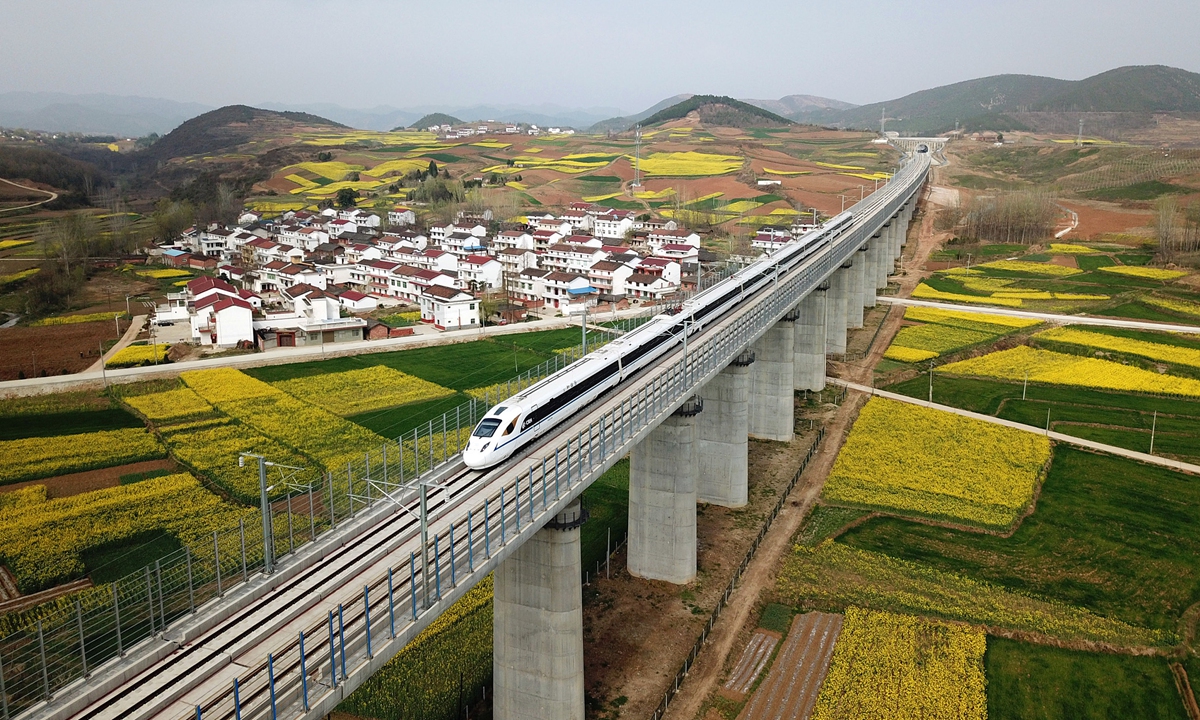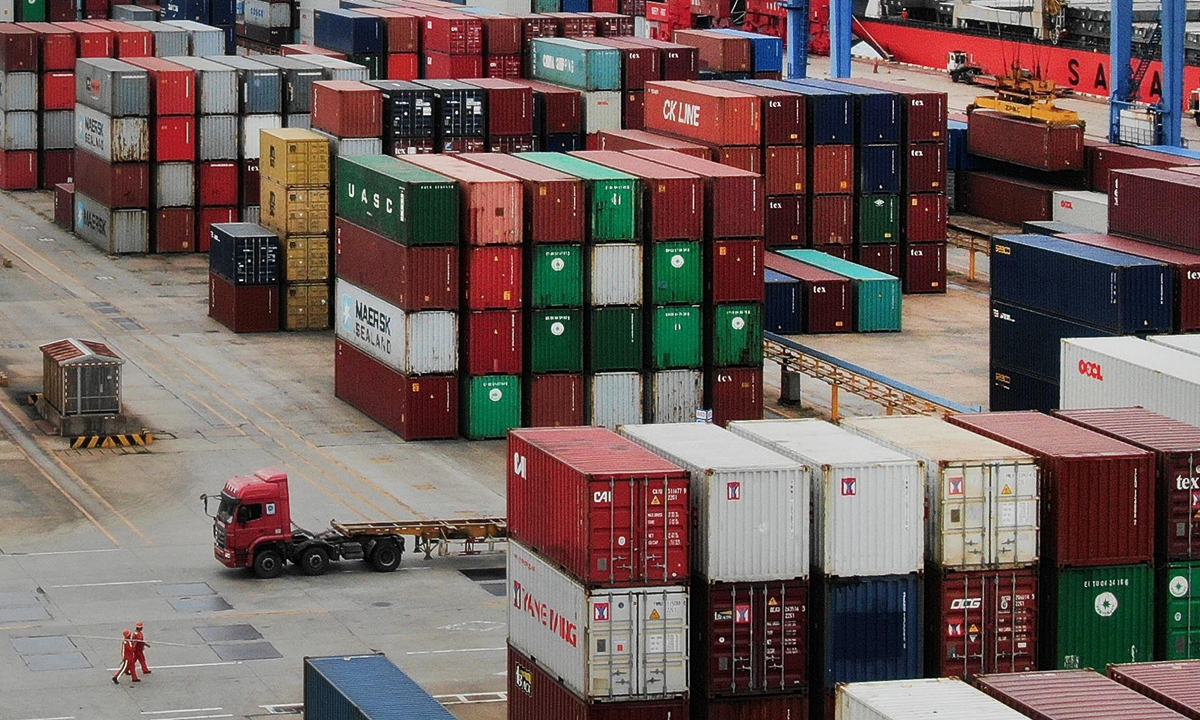Upcoming 14th Five-Year Plan policy package attracts wide attention

File photo:VCG
As China moves toward its first centennial goal of building a moderately prosperous society in all respects by the end of 2020, the upcoming 14th Five-Year Plan (2021-25) for national economic and social development has drawn domestic and international attention since it will lay the foundation for China to step into an era of a great modern country amid increasing external uncertainties and realize national rejuvenation.
Chinese President Xi Jinping urged the creation of the 14th Five-Year Plan (2021-25) for national economic and social development on several occasions in recent months.
Formulating and implementing the five-year plans are important ways for the Communist Party of China (CPC) to govern the country, Xi told a meeting of the Political Bureau of the CPC Central Committee. He also stressed the combination of top-level design and public advice in compiling the plan, the Xinhua News Agency reported on Thursday.
As early as September 2019, Xi mentioned the drafting of the 14th Five-Year Plan in a meeting on national harmony. And in December 2019, he stressed in an economic meeting the importance of economic planning for the 14th Five-Year Plan.
The fifth plenary session of the 19th CPC Central Committee will be held in Beijing in October. One main item on the agenda is to draw up the 14th Five-Year Plan.
Analysts said that given growing uncertainties, the 14th Five-Year Plan has attracted great attention, as it will be the first five-year plan after China accomplishes building a moderately prosperous society in all respects and realizing its first centennial goal in 2020, as well as making all-out efforts to achieve its second centennial goal - to build a great modern socialist country around 2049.
The "two centennial goals" refer to building a moderately prosperous society in all respects by the centennial of the CPC, which was established in 1921, and building a modern socialist country that is prosperous, strong, democratic, culturally advanced and harmonious by the centennial of the People's Republic of China, which was founded in 1949.
As China has set its long-term goal for national rejuvenation, and every five-year plan brings it a step closer to that goal, the 14th Five-Year Plan that will be made at the intersection of the two centennial goals would set the tone and lay the foundation for building a great power. It is also expected to open a new situation amid increasing uncertainties in the post-COVID-19 era, Yan Yilong, a research fellow with the Center for China Studies at Tsinghua University, told the Global Times.
The 14th Five-Year Plan would further upgrade China's extensive economy to high-quality economic growth, and expand investments into independent research and development on key technologies to avoid being stifled by others, said Cong Yi, a professor at the Tianjin University of Finance and Economics.
Amid a more complicate global economic and political environment, especially as the US intensifies confrontations with China and will not alter its tough policies in the near future, the 14th Five-Year Plan is also about how China would subtly and effectively protect its development and interests, Cong told the Global Times.
In recent months, the international community has witnessed more provocations from the US against China, from the mafia-style buy-out of Chinese company TikTok, to the Huawei ban, and from hyping topics on Hong Kong and Xinjiang to playing the Taiwan card.
China is also facing fiercer global competition as it follows the path to be a great power, climbing up the global industrial chain and changing economic globalization and international division of trade, Cong noted.
Against the backdrop of increasingly strained China-US ties and an external environment characterized by rising protectionism and a global economic downturn, China has sent the clearest sign that it will throw more policy weight to further prop up its economy, with a massive consumer market to cope with fast evolving external risks.
Observers noted that a development pattern centered on "internal circulation" and supplemented by the "external circulation" would be set by the 14th Five-Year Plan for the future development of China.
When chairing a symposium with entrepreneurs on July 21, Xi also stressed the need to give full play to the advantages of a huge domestic market, so that a new development pattern will gradually be created, whereby domestic and foreign markets can boost each other, with the domestic market as the anchor.

import and export File photo:VCG
Institutional advantage
Aside from providing the general direction, the 14th Five-Year Plan is more like "a super policy package" - setting quantitative indexes on many fields, including economic growth and environmental protection, and listing major programs and infrastructure projects affecting people's livelihood. Unlike the State of the Union addresses in the US, China's five-year plans emphasize implementation, Yan said.
For example, China managed to update its infrastructure construction during the 12th Five-Year Plan, with railways reaching 121,000 kilometers and the largest 4th generation mobile communication network.
Every five-year plan has contributed to the miracle of China's quick economic development and rise. "If we compared countries to students in the same class, China is the one who catches up by making long-term goals and implementing them with small plans," Yan said.
The five-year plan is also one of the great achievements and characteristics of CPC governance as it maintains the consistency of policymaking and combines the superiority of socialist society with the market economy, experts said.
Yan cited Nobel Laureate Professor Robert Engle as saying that while China is making five-year plans for the next generation, Americans are planning only for the next election.
Like other five-year plans, the 14th one is a top-design blueprint that provides the direction for China's development, guides enterprises and individuals, and mobilizes social resources to actively participate in the plan for their and the country's development.
Making periodic plans could also help China resist external impact, experts said. They noted that in facing the sudden outbreak of the COVID-19, China made swift and decisive decisions to deal with the epidemic, and avoided turning the public health issue into an economic and social crisis.
This top design is not an arbitrary interference of the market, but a scientific blueprint made based on a wide range of opinions and discussions.
Yan noted that it takes at least two years for China to make a five-year plan as scholars, officials and policymakers would soak themselves into the capillary of society, listening to suggestions from people of all walks of life, learning from previous mistakes and having wide discussions.
"It's like developing a software - we must test it, then find the bugs and fix it. Every five-year-plan adjusts to the changes. Combining practices and theories and evolving with the times are also advantages of CPC governance," Yan said.